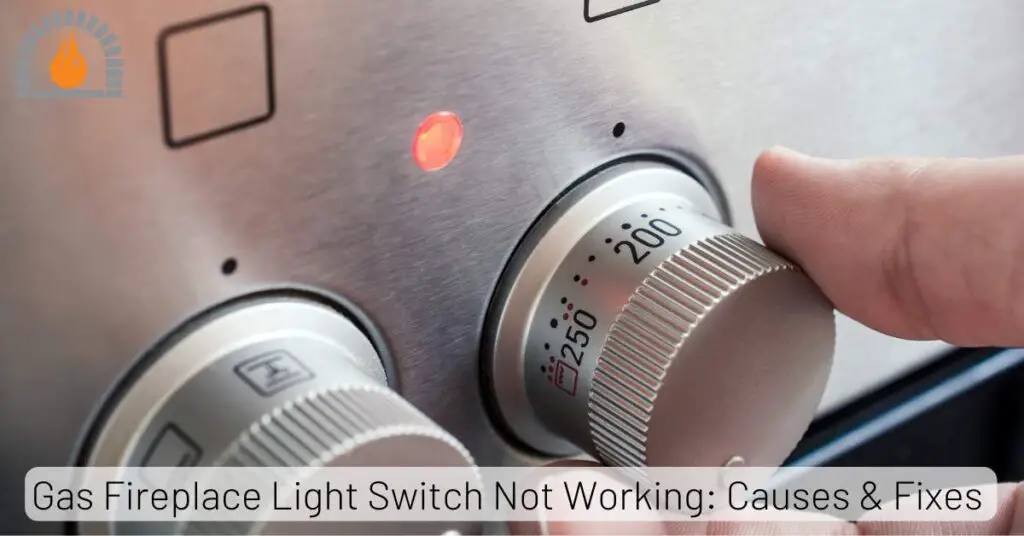Looking to transform your existing gas fireplace into a more efficient, eco-friendly heating solution? A gas fireplace to pellet stove conversion offers homeowners an excellent opportunity to reduce heating costs, increase energy efficiency, and embrace a renewable fuel source.
This comprehensive guide will walk you through every aspect of the conversion process, from initial considerations and cost analysis to step-by-step installation instructions and long-term maintenance requirements.
Whether you’re motivated by environmental concerns, heating efficiency, or simply want to cozy up to a different kind of fire, understanding the complete conversion process will help you make an informed decision for your home heating needs.
Key Takeaways
- Converting from a gas fireplace to a pellet stove can significantly reduce heating costs and increase energy efficiency
- The conversion process involves removing the gas unit, preparing the space, and installing proper venting for the pellet stove
- Professional installation is recommended for safety and compliance with local building codes
- Pellet stoves offer a renewable heating option with lower emissions compared to gas fireplaces
- Regular maintenance is essential for optimal performance and longevity of your pellet stove
- The initial investment typically ranges from $2,500-$5,000, with potential energy savings offsetting costs over time
Why Convert from Gas to Pellet?
Homeowners consider converting their gas fireplaces to pellet stoves for several compelling reasons. Unlike gas fireplaces that rely on fossil fuels, pellet stoves use biomass fuel made from compressed organic materials like sawdust, wood chips, and agricultural waste. This renewable energy source not only reduces your carbon footprint but also provides more consistent heat output.
According to the U.S. Environmental Protection Agency, pellet stoves are among the cleanest-burning heating appliances available today, with some models achieving efficiency ratings of up to 85%. This stands in contrast to many gas fireplaces that operate at 50-70% efficiency, with significant heat loss through the chimney.
The aesthetic appeal of pellet stoves also attracts many homeowners. The real flame and wood-burning ambiance create a cozy atmosphere that gas fireplaces often struggle to replicate, despite technological advances in gas log design.
Conversion Process
Converting a gas fireplace to a pellet stove isn’t as simple as swapping one appliance for another. The process involves several critical steps to ensure safety, efficiency, and compliance with local building codes.
First, it’s important to understand that pellet stoves require different venting systems than gas fireplaces. While gas fireplaces typically use B-vent (natural draft) or direct vent systems, pellet stoves require specialized venting designed for the higher moisture content and particulate matter in pellet exhaust.
The conversion process generally involves:
- Safely disconnecting and removing the existing gas fireplace
- Preparing the fireplace opening and chimney
- Installing appropriate venting for the pellet stove
- Positioning and securing the pellet stove
- Making necessary electrical connections
- Testing the system for proper operation
Cost Analysis: Gas Fireplace vs. Pellet Stove
When considering a gas fireplace to pellet stove conversion, understanding the financial implications is crucial. Below is a detailed cost comparison to help you evaluate the investment:
| Cost Factor | Gas Fireplace | Pellet Stove |
|---|---|---|
| Initial Purchase & Installation | $2,000-$5,000 | $1,500-$3,500 |
| Annual Fuel Cost | $600-$1,200 | $800-$1,500 |
| Maintenance Cost (Annual) | $100-$200 | $150-$300 |
| Average Lifespan | 15-25 years | 15-20 years |
| Energy Efficiency | 50-70% | 70-85% |
While the initial costs are comparable, pellet stoves typically offer better long-term value due to their higher efficiency and the potential for lower fuel costs depending on your location and access to pellet fuel.
The Department of Energy provides resources for comparing home heating costs that can help you calculate potential savings specific to your region and home characteristics.
Step-by-Step Conversion Guide
1. Planning and Preparation
Before beginning your conversion project, thorough planning is essential. Start by checking local building codes and obtaining necessary permits. Many jurisdictions require permits for fireplace modifications, and working with gas lines specifically requires licensed professionals in most areas.
Measure your existing fireplace opening to ensure compatibility with your chosen pellet stove. Most pellet stoves require specific clearance distances from combustible materials, which may necessitate modifications to your existing fireplace surround.
2. Gas Line Disconnection and Fireplace Removal
Safety is paramount when working with gas lines. This step should always be performed by a qualified professional. The process involves:
- Shutting off the gas supply
- Disconnecting the gas line from the fireplace
- Carefully removing the gas fireplace unit
- Capping the gas line according to code
3. Chimney and Vent Preparation
Unlike gas fireplaces, pellet stoves require specialized venting systems designed for biomass combustion. This typically involves:
- Installing a stainless steel liner (if reusing the existing chimney)
- Ensuring proper clearance from combustibles
- Adding appropriate termination caps
- Verifying adequate draft for proper operation
The Pellet Fuels Institute provides detailed guidelines for proper venting installations that should be followed to ensure safety and efficiency.
4. Pellet Stove Installation
With proper preparation complete, the pellet stove can be installed:
- Position the stove according to manufacturer specifications
- Connect the venting system
- Make electrical connections for fans and controls
- Install floor protection if required
- Test all safety features and controls
5. Final Inspection and Testing
Before using your new pellet stove, a final inspection ensures everything is operating correctly:
- Verify all connections are secure
- Test the venting system for proper draft
- Check safety features and automatic shutdown systems
- Perform a test burn to ensure proper operation
Required Materials and Equipment
Converting your gas fireplace to a pellet stove requires several specialized components:
| Component | Purpose | Estimated Cost |
|---|---|---|
| Pellet Stove | Primary heating appliance | $1,500-$3,500 |
| Venting System | Exhaust removal and air intake | $300-$800 |
| Floor Protection | Shielding from heat | $100-$300 |
| Chimney Liner | Improves draft and safety | $400-$1,000 |
| Electrical Components | Power for controls and fans | $100-$200 |
| Installation Labor | Professional installation | $500-$1,500 |
Additional tools and materials may be required depending on your specific installation circumstances.
Professional Installation vs. DIY
When considering a gas fireplace to pellet stove conversion, one of the most important decisions is whether to hire professionals or attempt a DIY installation.
Professional Installation
Advantages:
- Ensures compliance with all building codes and manufacturer requirements
- Typically includes warranty coverage
- Reduces risk of fire hazards or carbon monoxide issues
- Often completes the project more quickly
Disadvantages:
- Higher initial cost
- Scheduling and coordination required
The National Fireplace Institute certifies professionals in pellet stove installation, and using an NFI-certified technician is highly recommended for safety and warranty purposes.
DIY Installation
Advantages:
- Lower labor costs
- Complete control over the project timeline
- Personal satisfaction of completing the project
Disadvantages:
- Voided manufacturer warranties
- Potential safety risks if not done correctly
- May not meet local building codes
- Steep learning curve for proper venting installation
For most homeowners, professional installation is the recommended approach due to the technical nature of proper venting and the safety implications of incorrect installation.
Venting and Chimney Requirements
Proper venting is perhaps the most critical aspect of a successful gas fireplace to pellet stove conversion. Unlike gas fireplaces, pellet stoves produce exhaust with higher moisture content and particulate matter, requiring specialized venting systems.
Types of Venting Systems
Pellet stoves typically use one of two venting approaches:
- Direct Vent Systems: These systems use two pipes—one for exhaust and one for combustion air. They’re ideal for situations where existing chimney access is limited or impractical.
- Natural Draft Systems: These systems use a single vent pipe that relies on natural convection to exhaust combustion products. They typically require a full chimney liner installation.
Chimney Liner Requirements
When converting an existing chimney for pellet stove use, installing a stainless steel liner is typically necessary. The liner:
- Improves draft and efficiency
- Reduces creosote buildup
- Protects the chimney structure from corrosion
- Ensures proper sizing for the pellet stove
The Hearth, Patio & Barbecue Association provides detailed technical resources regarding proper venting specifications for different installation scenarios.
Efficiency and Environmental Impact
One of the primary motivations for converting from gas to pellet is the potential for improved efficiency and reduced environmental impact.
Energy Efficiency Comparison
Pellet stoves generally outperform gas fireplaces in terms of heating efficiency:
| Appliance Type | Typical Efficiency Range | Heat Output (BTU/hour) |
|---|---|---|
| Gas Fireplace | 50-70% | 20,000-40,000 |
| Pellet Stove | 70-85% | 8,000-70,000 |
The higher efficiency of pellet stoves means more heat is delivered to your living space rather than lost through the chimney.
Environmental Considerations
From an environmental perspective, pellet stoves offer several advantages:
- Carbon Neutrality: The wood pellets used as fuel are made from renewable biomass materials. While burning pellets releases carbon dioxide, this is roughly equivalent to the CO2 absorbed by the trees during growth, creating a nearly carbon-neutral cycle.
- Reduced Fossil Fuel Dependence: Pellets are made from sustainable biomass rather than fossil fuels, reducing reliance on non-renewable resources.
- Lower Emissions: Modern pellet stoves produce significantly fewer emissions than older wood-burning appliances and, in some cases, fewer particulate emissions than gas fireplaces.
The U.S. Environmental Protection Agency’s Burn Wise program provides resources and information about the environmental impact of different heating appliances.
Maintenance and Operation
Proper maintenance is essential for ensuring the longevity, efficiency, and safety of your pellet stove after conversion.
Daily Maintenance
- Remove ashes from the burn pot
- Check fuel supply and refill if necessary
- Monitor for proper operation and unusual sounds
Weekly Maintenance
- Clean heat exchanger surfaces
- Check and clean glass door
- Inspect venting for any obstructions
Monthly/Seasonal Maintenance
- Thorough cleaning of the entire system
- Inspection of all electrical components
- Checking door seals and gaskets
- Professional inspection and cleaning of venting system
Annual Professional Service
Annual professional servicing is recommended to:
- Clean and inspect the entire venting system
- Check all safety features and controls
- Perform any necessary adjustments or repairs
- Verify proper operation and efficiency
Safety Considerations
Safety should be the top priority when converting from gas to pellet heating. Key safety considerations include:
Clearances
Maintain proper clearances between the pellet stove and combustible materials as specified by the manufacturer. Typical clearance requirements include:
- Sidewalls: 6-18 inches
- Back wall: 6-12 inches
- Floor protection: 18-36 inches in front
Carbon Monoxide Detection
Install carbon monoxide detectors in appropriate locations near the pellet stove and sleeping areas. Test detectors monthly and replace batteries regularly.
Fire Safety
- Keep combustible materials away from the stove
- Use only the type of pellets recommended by the manufacturer
- Store pellets in a dry location away from the stove
- Have a fire extinguisher rated for wood fires nearby
Electrical Safety
- Ensure proper grounding of the pellet stove
- Use appropriate surge protection
- Have electrical connections performed by a qualified electrician
Pros and Cons of Pellet Stoves
Advantages
- High Efficiency: Modern pellet stoves convert 70-85% of fuel to usable heat
- Environmental Benefits: Use renewable biomass fuel with lower emissions
- Cost Savings: Potential for lower heating costs compared to gas or electricity
- Consistent Heat Output: Automated feed systems provide steady heat
- Ambiance: Real flame and wood-burning atmosphere
- Fuel Availability: Pellets are widely available in most regions
Disadvantages
- Initial Investment: Conversion costs can be significant
- Maintenance Requirements: More regular maintenance than gas fireplaces
- Electricity Dependence: Require electricity to operate fans and controls
- Noise: Fans and auger systems create some operational noise
- Fuel Storage: Require space to store bags of pellets
- Complexity: More mechanical components than gas fireplaces
FAQs
Is converting a gas fireplace to a pellet stove worth it?
For many homeowners, the conversion is worthwhile due to increased efficiency, lower operating costs, and environmental benefits. The payback period typically ranges from 3-7 years depending on your heating costs and climate.
Can I install a pellet stove myself?
While technically possible, professional installation is strongly recommended due to the complexity of proper venting and the safety implications of incorrect installation. Many jurisdictions also require professional installation for code compliance.
How much does a typical conversion cost?
A complete gas fireplace to pellet stove conversion typically costs between $2,500 and $5,000, including the pellet stove, venting system, and professional installation.
Final Thoughts
Converting your gas fireplace to a pellet stove represents a significant home improvement project that can enhance your heating efficiency, reduce environmental impact, and create a cozy atmosphere in your living space.
While the conversion process requires careful planning, professional installation, and ongoing maintenance, the benefits often outweigh the initial investment for many homeowners.
By understanding the complete conversion process, costs involved, and maintenance requirements, you can make an informed decision about whether this upgrade is right for your home.
With proper installation and care, your new pellet stove can provide reliable, efficient heat for many years to come.
Remember to consult with certified professionals, obtain necessary permits, and follow all manufacturer instructions and local building codes throughout your conversion project. The investment in proper planning and installation will pay dividends in safety, efficiency, and enjoyment of your new pellet heating system.
Affiliate Disclosure: Fireplaceadviser.com is a participant in the Amazon Services LLC Associates Program. We may earn a commission when you click on certain links on this site and purchase.

Hello!! I am Jamal Khan. I often fix my home electric heaters and gas stove problems and research the common issues in the heating units to improve my knowledge and expertise. The aim of establishing fireplaceadviser.com is to share my expertise and knowledge with my audience.












